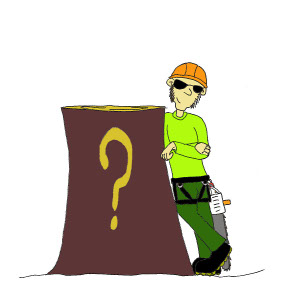
-
How often does my tree need to be pruned?
-
Is stump removal included as part of tree removal service?
-
My tree has dead branches. Is there a way to save it, or does the whole tree need to be removed?
-
My tree is not accessible from a bucket truck. Can it still be pruned?
-
What is the difference between tree pruning and tree trimming?
-
Why do tree stumps need to be removed?
-
Why is it important to prune trees?
-
Why is it important to prune your shrubs?
-
Why is mulch used?
-
Will a Mild Winter Mean More Insects?
How often does my tree need to be pruned?
Trees should be pruned regularly, at least once per year. The best time to prune your trees is during the dormant season. Contact Helke’s Tree Service to schedule your next tree pruning service.
Is stump removal included as part of tree removal service?
Stump removal is not normally part of our tree removal service. This is an additionally quoted service we offer for complete tree removal.
My tree has dead branches. Is there a way to save it, or does the whole tree need to be removed?
If your tree has dead branches, you need to call Helke’s Tree Service right away, as dead branches are a major safety risk. We will remove any safety and plant life threatening branches, diagnose plant health care problems and discuss any pre and post treatment concerns we may have.
My tree is not accessible from a bucket truck. Can it still be pruned?
Yes, Helke’sTree Service tree pruning specialists are trained and experienced climbers. It is important to select a professional for pruning your trees as many risks come with tree pruning.
What is the difference between tree pruning and tree trimming?
Both tree trimming and tree pruning is the process of cutting and removing dead branches. Tree trimming usually refers to shrubs and tree pruning usually refers to trees.
Why do tree stumps need to be removed?
The two main reasons for tree stump removal is for safety and aesthetic appearance. A tree stump left in the ground after Milwaukee tree removal is a major safety concern for both people and pets. A tree stump left in the ground overtime becomes soft making it an ideal home for insects like bees. Contact Helke’s Tree Service for tree and stump removal services .
Why is it important to prune trees?
Trees need to be pruned regularly. When many think of the reasons for tree pruning, they only think of aesthetic appeal or simply removing branches blocking the view. Both your safety and the plants health is at risk if you ignore your trees pruning needs. Dead tree branches can fall at any moment crashing down on your garage, house, or worse children or pets. By pruning your tree regularly, you can eliminate these dangerous outcomes. Trees growing close to power lines need to be pruned regularly to eliminate the risk of limb damage. Power lines can cause damage to the tree limbs which are an invite to insects and disease. Our Milwaukee tree pruning specialists are experts in overall plant health care. Contact Helke’s Tree Service to learn more about our tree pruning services.
Why is it important to prune your shrubs?
The main reason for pruning shrubs is for aesthetic appeal. Trimming your shrubs can open up walkways, clear window view, and create an overall cleaner look. Call Helke’s Tree Service for your tree and shrub trimming services.
Why is mulch used?
Mulch is one of the most beneficial ways to maintain the health of your trees and shrubs. Mulch keeps tree roots cool and moist in the summer and insulated in the winter. However, too much mulch can choke the roots and cause decay. At Helke’s Tree Service, we are experts in complete plant health care with the experience and knowledge to fully understand your trees mulch needs. Contact Helke’s Tree Service today to learn more about our Wisconsin plant health care plans.
Will a Mild Winter Mean More Insects?
Does the mild winter compounded with drought stressed trees mean more insect problems? We will be watching closely for insects including borers, spider mites, scale and the return of gypsy moths. Mild winters typically mean an increase in insect populations the following season.